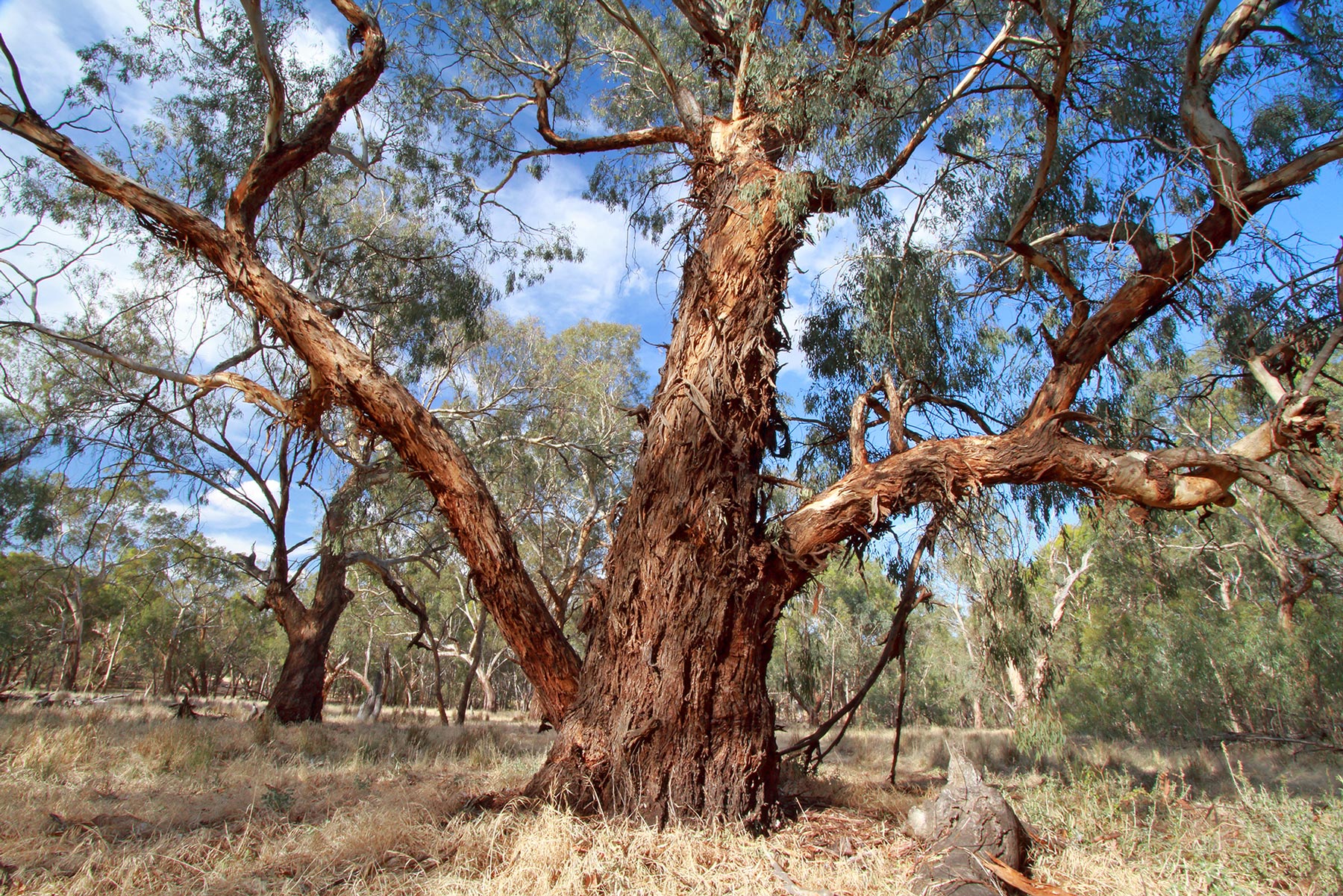By Ian Davidson and Chris Tzaros – Wangaratta Landcare & Sustainability
Yellow Box is a native tree that grows locally and is highly valued for both its attractive form and abundant nectar supply when flowering. The Yellow Box is a long-lived, medium-sized and occasionally tall eucalyptus tree that is endemic to south-eastern Australia. It usually has rough, flaky or fibrous bark on part or all of the trunk, smooth greyish to yellowish bark above. Yellow Box growing in higher elevations at the head of gullies are often taller and smoother barked. The adult leaves are relatively short lance-shaped and can have an elegant weeping appearance, especially when viewed from a distance.
Locally they produce flowers mostly from late winter-spring, but also occasionally flower in summer. Their fruits and buds occur in groups of seven and the buds are barrel-shaped with valves enclosing the fruit which is semicircular in shape. The flowers are white. They are highly prized by bee-keepers for the high-quality honey they produce.
Yellow Box occur in our landscape on the better-quality loams on the lower parts of the slopes, broad gullies and plains above the River Red Gum floodplains. This was where much of the best agricultural land was and consequently it was mostly cleared for agriculture. The best remaining examples are generally found along roadsides, in small patches on public land and as scattered paddock trees. Originally, Yellow Box woodlands were open and dominated by native wildflowers and grasses and shrubs were probably patchy.
These relict Yellow Box are still very important habitat for many native plant and animal species especially as a nectar rich food source. The now extremely rare Regent Honeyeater is known to seek out flowering trees to feed on the nectar. Other nectivores (nectar feeding) birds that prefer Yellow Box include Little and Purple-crowned Lorikeets and honeyeaters including Black-chinned, Brown-headed and friarbirds. Even an individual large Yellow Box next to a treed creek-line or roadside can be vital for the threatened Squirrel Glider, by providing nectar or sap when other energy-rich foods are scarce.
If you are walking, riding or driving through farmland on slight rises, see if you can identify these beautiful large trees.

